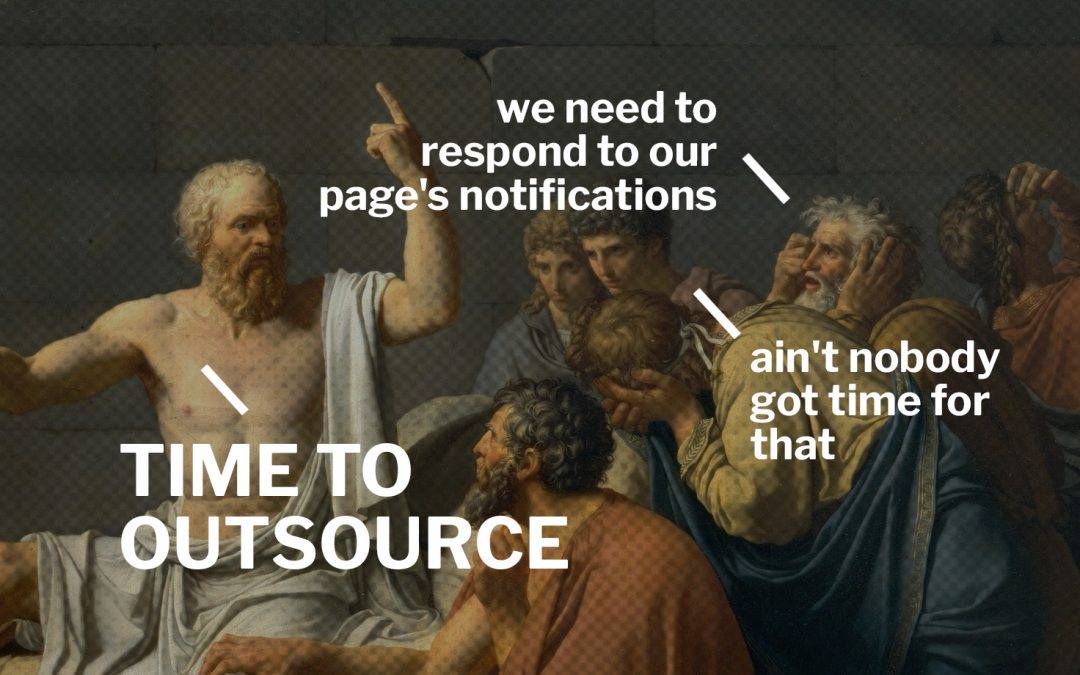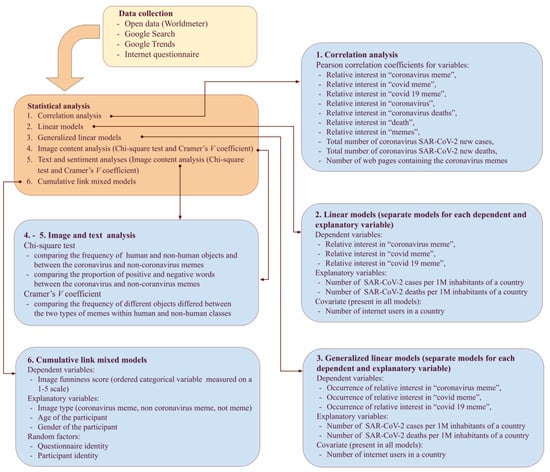Is it safe to outsource software development?
Is outsourcing software development truly safe? How can risks be mitigated while reaping its benefits? What effective measures can be put in place to ensure the safety of your data and systems? These thought-provoking questions set the stage for understanding the intricacies involved in outsourcing software development and the need to approach it with a calculated strategy.
There is a persistent worry about software outsourcing and it stems from security vulnerabilities and the possibility of miscommunication which may jeopardize the entire development process. In fact, according to a Forbes report, outsourcing can sometimes lead to a compromise of security and confidentiality due to the involvement of external entities. Gartner, a reputable global research and advisory firm, also shines a light on communication challenges that can result from differences in time zones and languages. However, they postulate that with strict and vigilant project management protocols, these inherent risks can be effectively controlled.
In this article, you will gain insights into understanding the landscape of outsourcing software development, its intricacies, benefits, and associated risks. Moreover, you will get equipped with strategic solutions to ensure a smooth and safe navigation through the outsourcing journey. This includes effective project management techniques, risk identification and mitigation strategies, and choosing the right outsourcing partner.
These ultimately placed are to guide you in making informed decisions about outsourcing your software development – a task that might seem convoluted, but with the right knowledge and approach, could become a true game-changer for your organization’s operational efficiency and productivity.

Understanding the Definitions of Outsourcing Software Development
Outsourcing software development involves hiring an external agency or team to handle the software development tasks of a business.
Outsourcing refers to engaging external resources for certain operations rather than doing them internally. In the context of software development, this means employing a third-party expert who specializes in specific areas of software creation, from design blueprint to the finished product.
Software development is the process of designing, constructing, testing, and maintaining applications, frameworks, or software components. While software development can seem complex, at its core, it is about problem-solving and creating effective solutions using technology.
Outsourcing Software Development: A Gambling Game with Quality and Security?
Greater Vulnerability to Cyberthreats
Outsourcing software development often leads to an increased risk of cyber threats. While outsourced teams may have specialized skill sets, ensuring their security measures are up to par with your organization’s standards is not a guarantee. When code is developed externally, communicating security protocols and policies becomes yet another challenge.
Moreover, the remote access granted to the outsourced team can provide potential loopholes for malicious individuals to exploit. If the subcontractor’s systems are compromised, they provide an easy entryway into your company’s confidential data and resources.
Quality and Compliance Concerns
One prevalent risk associated with outsourcing software development is the potential for low-quality output. Different outsourcing companies have varied levels of commitment to quality and it can be incredibly challenging to monitor and control the quality of work from afar.
The issue of regulatory compliance also stands as a critical concern when outsourcing. Some countries or regions have different laws and regulations regarding digital rights, intellectual property, and privacy. It falls on your organization to ensure that the software development process abides by all relevant laws, which can be an arduous task if your development team is in a different geographic location.
- Quality standards: Every country and each software development company has standards that it adheres to. If your organization has stringent standards, it may be a hassle ensuring the overseas team understands and maintains them.
- Time zone differences: The difference in time zones can lead to communication delays which can, in turn, delay project completion. Plus, it can be incredibly challenging coordinating meetings.
- Cultural differences: Cultural differences can lead to misinterpretations, misconceptions, and miscommunications that could impact your project’s success.
The decision to outsource software development comes with a myriad of considerations. The unspoken dangers and risks lie beneath the surface, often overlooked in the face of cost and time savings. These include greater susceptibility to cyber threats due to remote access and potential compromised systems of the subcontractor. There are also challenges around maintaining quality and navigating cultural, time, and regulatory differences. But with an understanding of these risks, proactive steps can be taken to safeguard projects and maintain control over the end product.
Decoding the Risk Map: Unraveling the Pitfalls of Outsourcing Software Development
Unmasking the Shocking Reality
Is it truly secure to entrust your software development to an external entity? Multiple aspects need to be taken into account before making a decision. The most prominent fact related to this issue is the question of security. When you outsource software development, you are essentially handing over a significant portion of your business to another organization. This organization may not share your security culture or ethos, and this can lead to unintentional security breaches or, in the worst-case scenario, deliberate malfeasance.
Cracking the Main Concern
The foremost hiccup with outsourcing software development revolves around the disclosure of sensitive data. Once your business information is out there in the open, especially with an organization that may not take security as seriously as you do, you risk a data breach that could result in a serious catastrophe for your business. The heartbreak of Intellectual Property theft is another worry that you need to grapple with when you entrust your software development to another party. There have been numerous instances where businesses have lost millions in revenue due to IP theft from unscrupulous outsourcing companies.
Best Practices to Mitigate Risk
While the hurdles are significant, there are admirable practices that can be applied to mitigate the risk. Implementing strict security protocols is a must-do from the start. These include data encryption and carefully controlled access. Additionally, before deciding on an outsourcing partner, carry out a meticulous vetitude check. Make sure they have a robust security culture and good reviews from other customers. It is also crucial to have a legal agreement that safeguards your Intellectual Property rights. Regular audits of their operations can further ensure they are compliant with your security requirements. Outsourcing can indeed be a safe bet and a financially sound decision when executed with plenty of caution and forethought.
Outsourcing Software Development: Is the Risk Worth the Reward?
Unraveling the Complex Notions of Safety and Outsourcing
Does outsourcing your software development projects put your company’s sensitive data at significant risk? While it can appear so initially, understanding and implementing robust security methods can quash this fear. Outsourcing is a convenient and cost-effective solution for businesses today. However, the key worry circles around the element of trust and data safety. A carefully chosen partner could facilitate not just an increase in production capacities, but also fortify the operations with reliable security measures. The onus falls on the business leaders to ensure that their outsourcing partners abide by rigorous data protection standards, akin to in-house security practices.
Analyzing the Core Problem
The significant issue with outsourcing software development often manifests as data breaches, resulting in devastating losses for businesses worldwide. The uncertainty stems from the fact that your highly sensitive information rests in the hands of an external agency, which could fall into the wrong hands. Likewise, hackers significantly target third-party vendors who handle data for other businesses due to their often inadequate security systems. This exacerbates the risks for companies that outsource their software needs, as a successful cyber hack on the outsourcing partner can lead to your data exposure. This core problem, therefore, demands robust and painstakingly designed security measures.
Spotlight on Successful Strategies to Bolster Security
There are several examples of companies that have effectively mitigated the risks associated with outsourced software development. Firstly, they focus on meticulously examining their prospective partners’ security measures, which include their security policies, infrastructure, incident response mechanisms, and practices for data handling and storage. An instance can be seen in how global finance companies outsource their software development, while maintaining robust security measures. They achieve this by ensuring that their third-party vendors oblige to rigorous data protection guidelines, comparable to their stringent in-house practices.
On another note, tech giants like Google and Amazon go a step further by practicing ‘zero-trust security.’ It means they operate under the assumption that no user or system can be trusted without verification, regardless of whether the software development is done in-house or outsourced. They ensure stringent testing and audit procedures are in place to continually monitor and validate their partners’ safety standards.
Lastly, numerous firms adopt secure coding practices, regular patches, and updates in their software development when outsourcing to ensure their products are less vulnerable to attacks. They simultaneously also indulge in educating their third-party vendors about safe coding practices and the importance of regular software updates in thwarting security breaches. These examples illustrate how businesses can keep their data safety intact despite the constraints of outsourcing.
Conclusion
Is it all a gamble, entrusting your most vital projects to a team you may never meet in person? It brings into focus the fundamental crux often encountered in today’s digital age – the dynamic balance between risk and reward. Outsourcing software development, when managed correctly, can elevate your business to new heights. Although the scenario may seem daunting initially, educating oneself about processes and engaging with a reputed service provider can significantly diminish apprehensions.
We hope that you’ve enjoyed dissecting the topic with us. We aim to continually empower you with insights, enabling you to make informed decisions. The exciting part? There’s so much more we delve into and expound. Our blog isn’t merely a space filled with opinions and statistics. Instead, we strive to foster an enlightening dialogical relationship, a community where thoughts can be freely exchanged. So why wait? Join this engaging discourse and let’s explore business, tech, and more together.
We believe that knowledge grows through sharing – and we have a lot planned for our upcoming releases! The future will bring new trends, innovation, and discussions, and we are excited to explore them with you. Stay tuned, expand your horizons, and gain actionable strategies for your brand. The digital realm evolves at a breakneck speed, and to keep you ahead of the curve is our primary vision. Come, join this journey of exploration and transformation that awaits you.
F.A.Q.
1. What is software development outsourcing?
Software development outsourcing is a practice where a business hires an external agency or individual to perform development services. This process often involves tasks such as coding, programming, testing, and more.
2. Is software development outsourcing safe?
Yes, outsourcing software development is considered safe. However, the security and the safety depend on the reliability and the professional integrity of the outsourcing provider you choose.
3. What are the primary risks associated with software development outsourcing?
The main risks associated with software development outsourcing are potential miscommunication, time zone differences, differing quality standards, and possible intellectual property breaches. However, these risks can be mitigated with clear contracts, strong communication and choosing a reputable outsourcing provider.
4. How can I ensure a secure outsourcing experience?
To ensure a secure outsourcing experience, it’s important to work with a trustworthy vendor, have a comprehensive and clear contract, and to maintain regular, transparent communication. Using secure online platforms for project management and data sharing can also enhance security.
5. Is outsourcing software development cost-effective?
Typically, outsourcing software development is cost-effective as it enables businesses to access global talent at competitive rates. It also eliminates costs associated with hiring, training and maintaining an in-house team. However, the final cost will depend on the complexity of the project and the rates of the outsourcing provider.









